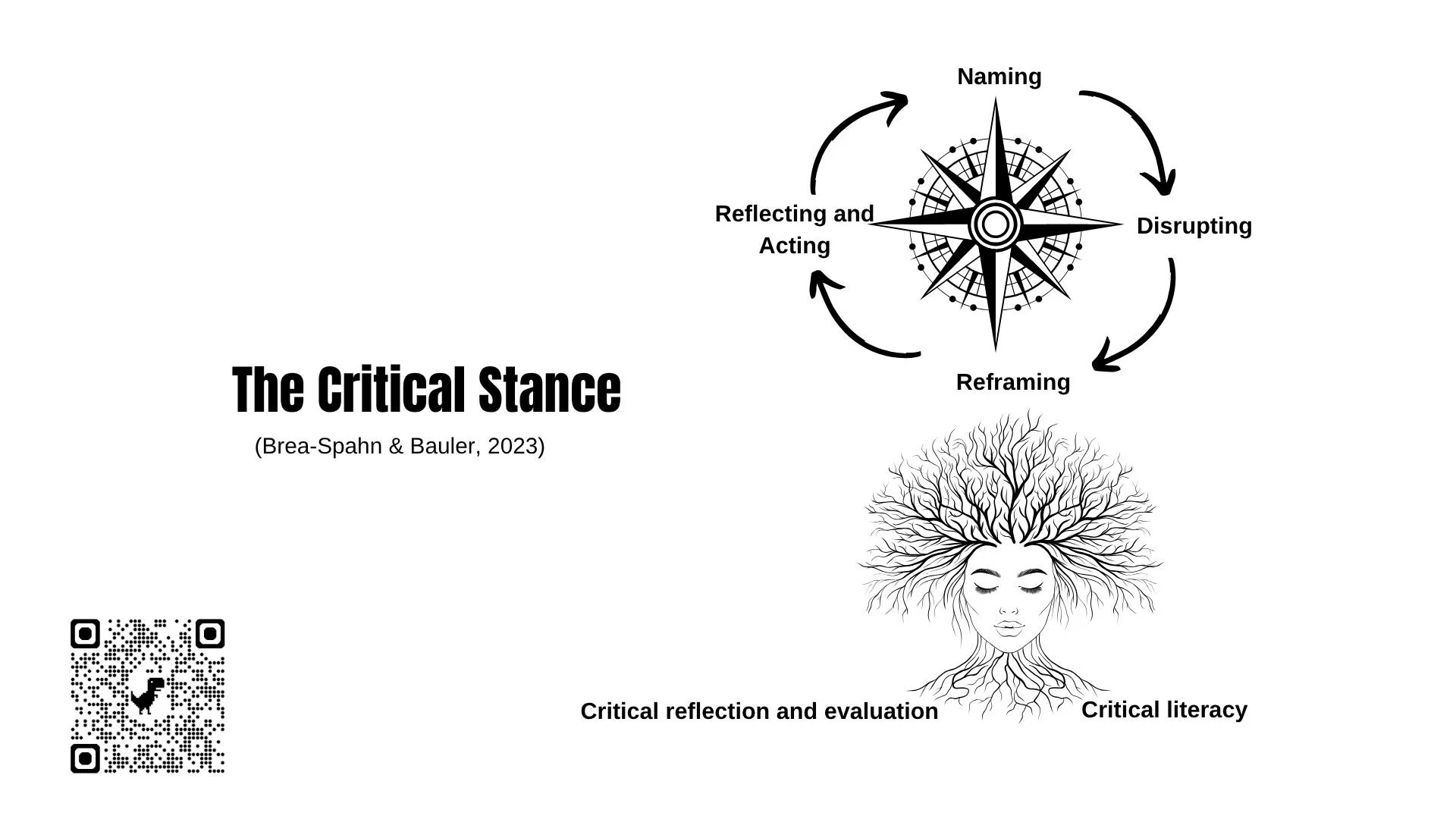Co-learning with our critical stance
Mark Manders: Tilted Head - Doris C. Freedman Plaza NYC, Feb. 2019
Mark Manders’s Tilted Head is conceptualized by some as an unfinished/ abandoned bronze sculpted human head. To me, however, it’s a visual metaphor for accepting the incompleteness of our learning journeys, our infinite choice to (re)volutionize our knowing selves.
How do we keep our minds in continuous evolution?
What are the ways in which we check in with our curiosity and notice our growth edges?
Why is it important to recognize when the publicized facts of the world are in tension with our knowing, our lived experiences, and our learnings?
In 2023, Clara Vaz Bauler and I co-authored a paper that summarized some of our own curiosities about language/ing, creative wonderings we had shared for months via WhatsApp messages and zoom conversations. In the paper, we introduced the ‘critical interrogative stance,’ a framework for actively moving through questions about beliefs, dogmas, or thoughts on issues and/or people without seeking agreement or judgment along lines of ‘right’ or ‘wrong’- ness, while in dialogue within collectives. Full disclosure - This way of questioning does ground itself in critical literacy and critical self-evaluation and reflection, which, in turn, rely on critical consciousness. Ah yes- it means we are continuously calling ourselves in to notice how systems and institutions work, what the predominant narratives are, and how marginalization and erasure is done - and our participation in these ‘events’. Thus, it’s not a ‘vanillafied’ or “politically neutral” space, but it does invite us to be receptive and accommodate for unsettling feelings of discomfort while remaining intentionally committed to continue learning - a learning that can only come to fruition with our acompañantes in life.
I share the brief summary of the dimensions below in case these are useful as we engage with ideas that resonate with and/or challenge to keep growing, which seems a resonant need in this moment we exist and always…
The Critical Interrogative Stance includes four ‘dimensions’ for our questioning:
Name It
Let’s pause and breathe as we encounter the comment, material, news story, social media post; ask:
What are the ideas that are being expressed and that shape definitions, explanations about the issue/ concept/ event/ people?
Disrupt It
Yeah I know this word gets a bad rap! But, disruption is also about opening up to notice more, to dig in, to expand… Here’s where we welcome our own knowledges, including those often not considered as ‘scientific enough’ to be in books or articles but that we live every day…Ask:
What evidence or experiences do I have that support or challenge the ideas?
Reframe It
We only know what we ‘know’ but how do we tap into what we are still curious about? Ask…
What new ways of thinking or expressing or understanding can I learn from attentively and respectfully attending to “others’” views (via listening, researching, observing) about the issue/ concept/ event/ people?
Reflect + Act It
And now that we bring in ‘the other’ …. we do it over and over because one time we ‘listen’ may not be enough to understand.
What new ways of thinking, naming, and doing do I need to practice with others to continue new learning?
These are not necessarily steps and they don’t require completion in a linear sequence - you may get to disruption and think hmm I actually have learned some about this and can rename the issue something else -or maybe you’ve been in dialogue with someone who is teaching you generously - so maybe all the dimensions are lit up in your reflection and action dimension. And yep. This reflection and action dimension is even more active than the rest (a nod to a big inspiration in my own teaching Paulo Freire) because it’s practice (praxis) that commits us to a journey of becoming, the embodiment of our very own unfinished sculpted body of evidence and repertoire of experiences. It reconnects us with the incompleteness of our knowing, much like Manders’s head sculpture. And it reminds us that our learning is always better in relationship - in our shared stories, histories, dialogues - with others.
For a more ‘scholarly’ discussion, peek at the paper via the QR code.



